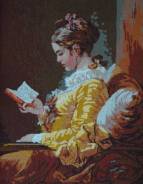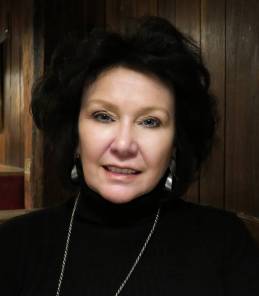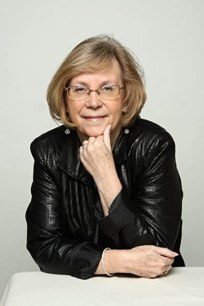Can a sensibly modern young woman on holiday find everlasting love an ocean away with a dashingly handsome aristocrat who may or may not be a murderer and, oh by the way, has been dead for 150 years?
In her debut paranormal romance, In the Spirit of Love, author Debbie A. McClure not only channels those feelings of déjà vu that so mystify even the most grounded among us but also demonstrates just how hard it is to “give up the ghost” when Fate is determined to fuel the fires of passionate reunion.
Interviewer: Christina Hamlett
**********
Q: Tell us about your personal journey as a writer and the mentors who encouraged you along the way.
A: Well, I gotta tell you, this has been a looong journey. Although I didn’t start writing until I was nearing fifty years of age, writing had been a life-long dream of mine. But as with so many people, life gets in the way. Years struggling with poverty as a single parent post-divorce, re-marriage, blending a family of five teenagers (yes, five!), and assorted jobs to pay the bills, had me holding back on the dream. Finally, I decided to do what I wanted to do, not just what I could do. Along the way I was encouraged by my parents, who always saw the potential and encouraged me to follow my heart. My mother has always been an avid reader, a pioneer in business, and a tremendous source of encouragement and mentoring for me throughout my life. When it comes to my writing, she, my father, and my husband have never faltered in their unwavering support. I’m one lucky woman!
Q: What books would we have found on your nightstand when you were 10? 20? Today?
A: At ten I was reading Nancy Drew and other youth-focused mysteries. I’ve always been intrigued as much by what I didn’t know, as what I did. In my twenties I had started reading Danielle Steele, and later, Nora Roberts, and J.R. Ward. Today, I still love the same authors, and have added a new favorite I discovered two new favorites via my middle sister; Kristin Hannah and Tatiana De Rosnay. In addition, I love to read Clive Custler adventure books, and have read lots of Stephen King and Dean Koontz. I have pretty eclectic tastes when it comes to reading.
Q: If you could have lunch with your three favorite authors of all time, who would they be, where would you go, and what questions would you most like to ask?
A: I’d love to lunch and learn with Kristin Hannah, Nora Roberts, and Clive Custler. My preferred lunch spot would be at a restaurant on a beach. I’m the biggest beach fan, and I love seafood! The questions I’d most love to ask each of these esteemed writers is; how do they see each book before they start to write, in progress, and at the end. Each one of these writers creates characters so full of real personality and intricate relationships, that I wonder how they keep it all straight. I’m not an outliner, but I do keep notes as I go to help me keep characters, places, and events in line. I’d love to know how they approach their writing, and whether they’ve ever been surprised by an ending or character.
Q: What was the moment when you first decided, “Aha! I’m going to sit down and write my first novel!”
A: People often ask me this when I’m doing a speaking presentation or book signing/reading. I actually remember it very clearly. It was during a Christmas break when I was working in real estate sales. I’d booked two weeks off, and had really been struggling with what I wanted to do with my life. I was nearing fifty years old, and even though the thought of taking on such a massive project scared the living heck out of me, I was determined to at least give it a shot. So, one day I told my husband I was going up to my office to “write”. He just nodded and said, “Go for it.”. That’s all I needed. I wrote that entire day, and by the time I pulled away from my computer, I knew I was hooked. I had no real plan, no outline for characters or plot. I just let my imagination go with the germ of an idea I had. From that day to this, I sit down every day and write for as much as 5-7 hours. In the beginning, I was still working a full time job in sales, so set my alarm 1-1/2 hrs early. Now, I write full time, having given up my job in sales.
Q: What attracted you to the genre of paranormal romance for your debut as a novelist?
A: Ah, good question. I guess I’d read a lot of paranormal romance over the years, and had always been intrigued with the idea of the paranormal. To me, as a writer, it allows me to explore situations and adventures not available to us mere mortals. In particular, I love pairing the “normal” with the paranormal characters. Of course my paranormal character, the ghost of a grand English country estate, has to embody all the elements of a traditional romantic protagonist, with a little dash of something extra. He has also had the advantage, or curse, of having witnessed a century and a half of history, people, and as a result, has developed a unique outlook on life. Because of the strong mystery aspect to this book, I was pleased to learn that several men had also really enjoyed it, and claimed they hadn’t been able to figure out “who done it” before the end. The leads are all there, but I’m glad readers of both genders have enjoyed this first book.
Q: Tell us how you came up with your title.
A: Because of my background in sales and marketing, I knew I wanted my title to indicate the genre, by including the word “love”. Because this story involves a ghost as the male lead, I chose to include the word “spirit”. In The Spirit Of Love just seemed to pull together all the elements I wanted in one tidy phrase.
Q: Would you say your work tends to have a running theme or message, and if so, what would that be?
A: Most definitely. I’d have to say that the running themes, or message, through my work is that life is full of mystery, we need to value each of life’s experiences, and love is worth fighting for. I also try to remind readers that friendship and family are the most valuable assets we have, and aren’t to be taken lightly.
Q: Who was your favorite character to write?
A: The ghost of Kent Estate, Sir Richard Abbottsford. As a result of his spectral existence, he’s had to learn a lot of very difficult lessons the hard way, and he continues to evolve as he begins to connect with the people, places, and events of the present.
Q: If Hollywood came calling, who’s your dream cast?
A: Oh, easy one! I’ve always envisioned Sir Richard, the ghost, as either Hugh Jackman (tall, dark, and handsome), or possibly Leonardo Di Caprio (suave and debonaire). I’ve envisioned Claire as fellow Ontario Canadian, the multi-talented Rachel McAdams. As for supporting cast characters, I’m much more flexible, and haven’t nailed down exact Hollywood representations for them. I’d like to be surprised on that one.
Q: Aspiring authors often assume that once they have written (and sold) their first book, they are automatically on Easy Street. Speaking from your own experience, what have been some of the challenges of sustaining a writing career once you embark on one?
A: I guess due to my background in commissioned sales, I knew it was going to be a looong haul, and my writing wasn’t a get-rich-quick thing. Still, I’ve learned that writing has a learning curve the size of a tsunami, and it’s really easy to get swamped and overwhelmed. The biggest challenges new writers face is getting the word out about who we are, our work, and our brand. I’m also amazed at the number of new writers who don’t realize that writing (and publishing) is a business, and consequently, they must be the CEO of their new venture. Learning to market and promote yourself and your work is a massive daily undertaking, and can be wearing, to say the least. Because the money doesn’t just flow in, writers also have to juggle the dream against the realities of life, and making a living. This means looking at either maintaining a day job in addition to writing, or turning your writing into part of a platform for additional revenue streams, such as paid public speaking gigs, workshops, freelance writing, etc. Someone recently posted on Facebook that many people say they could write a book, if only they had the time. I replied that if time were all it took, more people would walk this walk. There’s just so much more to it than that, talent and perseverance included.
Q: When and where do you get your best writing done?
A: Oh, I’m a morning writer. I’ve tried other times, but for me, I write best in the mornings, in my office. It’s then that my brain is clearest, I’ve had my morning coffee, I’m dressed (yes, dressed in proper day clothes), and ready to get to work for the day. If it’s a gorgeous, sunny summer day, I’ll take my laptop outside and sit in the gazebo at the patio table and write from there. It gives me the illusion of having gotten outside and away from my office.
Q: The publishing industry is undergoing a massive shift as new technologies are being developed and perfected. What do you see as the future of publishing and writing?
A: As those in the business will attest, this is a remarkable time to be a writer. So much is changing, and so quickly. I see writers, publishers, and agents, having to step up to working collaboratively to capture the benefits of current and upcoming technologies. The “gate-keeper” mentality of publishing just isn’t working for many of today’s writers, and as more writers move into the realm of self-publishing, and very successfully in some cases, each party is going to have to come to the table with open hands and a willingness to create the best product together, with the writer being treated as a valuable player. Fair compensation and contract terms for a writer’s work are becoming more of a hot topic, which is why I think we’re seeing more “hybrid” writers evolve. Technology isn’t going anywhere. In fact, I think the future is going to see a greater shift towards technology, as our next generations come to expect and rely on it for a number of reasons (that’s another topic entirely). I believe print books will always be available, perhaps more via POD, but I also see a shift in favour of new technologies in the future. Bricks and mortar stores are going to have to adapt to accommodate the coming changes, or risk failing completely.
Q: Do you believe it’s harder or easier for new writers to get published today than it was a generation ago?
A: Without a doubt, easier. With the advent of digital publishing, more and more writers are choosing to go the route of self-publishing. After all, they can hire the same professional editors, cover artists, and upload their work to the very same e-venues as the big publishers do. As a result, getting published isn’t as difficult to achieve today. But make no mistake, self-publishing carries a ton of work, and it all rests on the shoulders of the writer.
On the other hand, I think traditional publishers are even more careful about the writers they choose to work with. With limited distribution channels, overhead costs, etc., I believe publishers are looking for writers who are willing, and able, to approach their writing in a professional, serious manner. Creativity is certainly necessary, as is talent, but so is a business mind-set to persevere over the long haul.
Q: What’s your best advice to a writer who is just starting out, insofar as preparing for the challenges that await them?
A: In the beginning, just have fun! Explore the limits of your imagination. Don’t worry about the outcome. But in the meantime, start learning everything you can about the business of writing and publishing. Because if you decide to persevere in this crazy business, you’re going to have to be prepared to really dig in and learn. Also, connect with other writers, at all levels of their career. Build relationships, and help others build their own careers while building your own. Especially in these changing times, learn and share with each other. I’ve met some amazing people along the way, including you, Christina, and I hope they’ve learned as much from me as I have from them. Oh, and with regards to social networking, never post something unprofessional, derogatory, or something that labels you as less than professional. This means pictures, expletives, political, and religious view points. Set up an author fan page, and keep business and personal pages separate. People are watching and forming opinions on who you are and your message, whether you like it or not.
Q: What would readers be the most surprised to learn about you?
A: I failed both Grade 7, and typing! I’ve learned that failure doesn’t mean stop. Sometimes it just means pay attention, and try again. I now type as fast as I think, and that’s a real advantage when writing for hours at a time.
Q: What’s next on your plate? Give us the inside scoop!
A: After the success of In The Spirit Of Love, I decided to write the sequel, In The Spirit Of Forgiveness, which is slated for release later this month, May, 2014. Continuing the story of Claire and the ghost of Sir Richard, Forgiveness follows the two protagonists as they solve yet another mystery of Kent Estate. Magic, mystery, and love are all part of the spell woven throughout this exciting new story. I’m really excited about this next release, and hope readers enjoy this next book as much as the first. Who knows, I may even begin penning a series based on the first two books.
I’m also extremely excited to share that I’ve started a new novel in an entirely different genre; a fact-based historical fiction. The King’s Consort-The Louise Rasmussen Story is the story of a woman who rose from obscure poverty as an illegitimate child of a seamstress, to marry the King of Denmark. It is a true love story set in the mid-1800’s amid immense political intrigue and change. Despite severe opposition and open hostility from the aristocracy, Louise and her king are determined to be together, and as a result, change the course of a nation forever. I’m hoping to have this next project released sometime in 2015/16, but haven’t decided the publishing route for it yet. Time will tell.
Q: Where can readers discover more about you, your books, and ongoing public speaking or workshop events?
A: Website: www.damcclure.com
Blog: http://the-write-stuff.me/
Twitter: @debbiemcclure59
Facebook: https://www.facebook.com/#!/DebbieA.McClure59
Thank you so much for your invitation to chat today, Christina. I’ve really enjoyed the thoughtful questions you’ve posed.

















